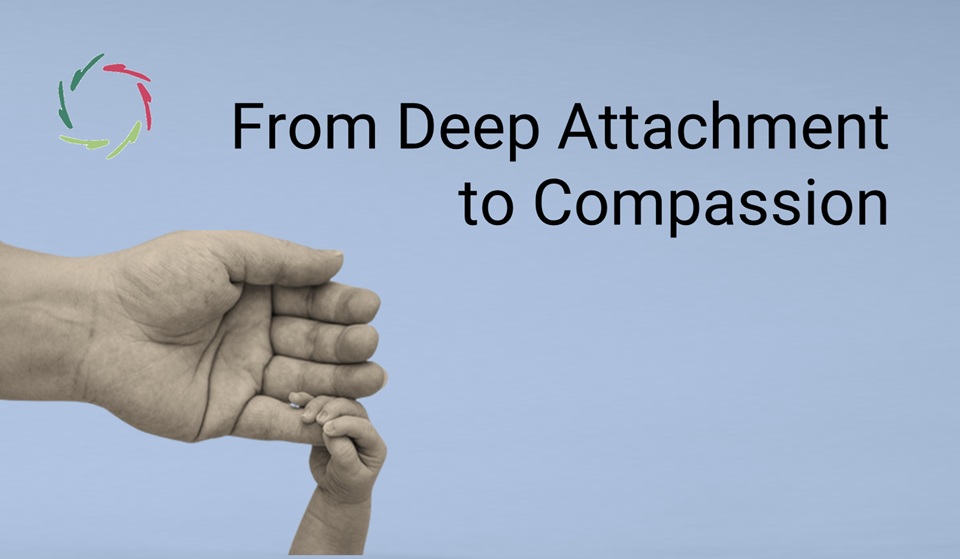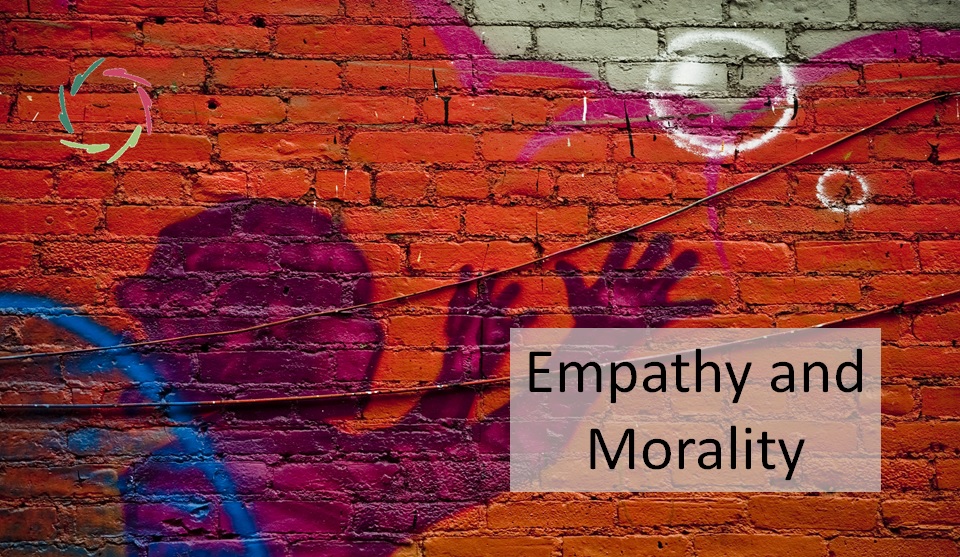Landscape of Empathy

This drawing is an attempt to make appropriate distinctions in a complex reality around ‘empathy’. Terms that are used to point towards the distinct parts – as always – contain arbitrariness.
Disclaimer
Please take this with a grain of salt. The drawing is a metaphor to make some things clear while other important distinctions are just not part of this metaphor.
This is primarily about distinctions at conceptual level. There is a lot of discussion in empathic literature through confusion of terms. Of main importance are the concepts. That’s my main reason to use a drawing.
The caring
The distance from the river depicts in this the degree (quantity, quality) of care that a more or less ‘caring person’ feels to the cared-for. The flowing river at the left depicts the flow of life within the person who is cared for.
The seeing
In the drawing, there is also an aspect of being able to see the cared-for. If one stands behind the hill, as well as when one is drowning in the river itself, one does not clearly see the cared-for. The ability to (clearly or not clearly) see, is referenced as ‘theory of mind’ (ToM). Having a good ToM = being able to clearly ‘see’.
Emotional contagion
= caring too much, thereby losing oneself in the caring for the other AND/OR lacking a well versed ToM. The result: a good chance of drowning in the river. The caring person may suffer substantially while being of no big help to the cared-for.
Sympathy
may in some cases be very nice but it’s still dangerous. So one needs to thread here with much care, which itself may be seen as ‘getting into the boat’.
Caring is caring for the whole, including yourself.
According to me, burnout is mostly found in this category, through swimming against the current until one’s energy is depleted.
Empathy
Being in the boat, the empathic person can feel the river if he wants. He can skillfully navigate and go his way. He can also drift with the river and get to know it intimately (good ToM).
At the same time, he stays in the boat in his own strength. As such, he can give most strength to the cared-for without much risk of burnout.
A lot of attention goes to this in the AURELIS coach’s academy.
Detached concern
for instance within the notion that a scientific view is best for the ‘physician as scientist’. Of course, science is very important, always.
However, the patient’s issue is frequently psychosomatic. In such case, empathy may be most important. A very scientific, detached view might lessen empathy too much.
The ideal? A continuous thinking/feeling about what is most appropriate in the situation.
One may also say: always science but including empathy.
Psychopathy
Note the psychopath’s seeing, far away from caring. A psychopath most often has a good ToM. This enables him to be manipulative. Dangerous!
An interesting question: does the psychopath clearly see the difference between empathy, sympathy and emotional contagion? May his not seeing of important differences in such be a reason for his transgression? I mean: if he thinks that empathy necessarily leads to emotional contagion, of course he will defend himself.
Does a psychopath loathe caring or does he just not know inside his own emotional life what it’s like? According to me, there are in this sense different types of psychopathy.
Autism
This is mainly a not-seeing. The caring part is irrelevant since impossible due to the not-seeing. In this sense, it’s something like the reverse of psychopathy.
Here too, there are probably very different types, according to why such a person doesn’t see. May it be sometimes the result of emotional contagion in a prior stage of life?


